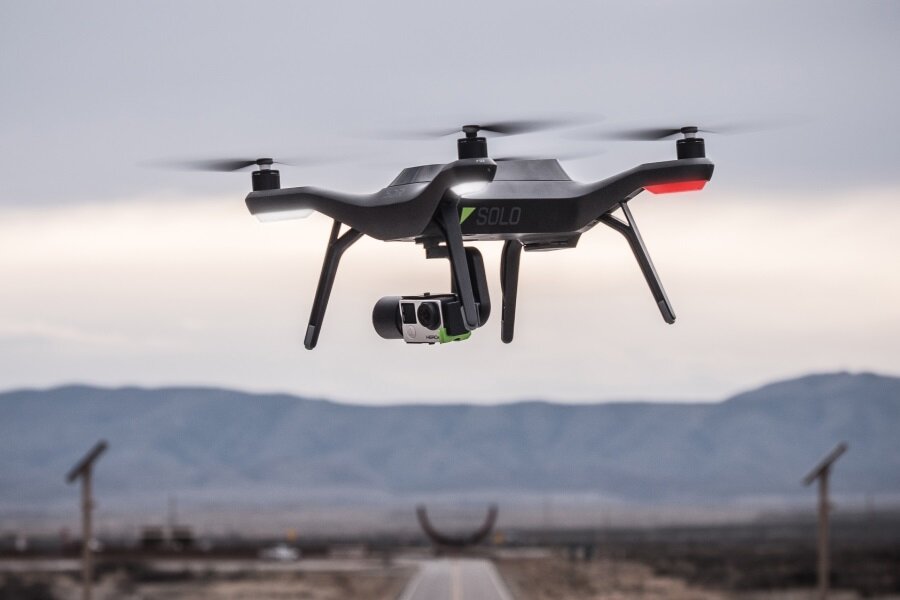3D Robotics Solo drone aims to make flying and filming easier
Loading...
Let’s say you’re an aspiring filmmaker who wants to get a sweeping landscape shot without spending thousands of dollars to rent a camera crane or a helicopter. Or, maybe you just want to see what your house looks like from a few hundred feet up in the air. Enter the drone.
With a little practice, you can fly a consumer drone with your smart phone or tablet, and once you’ve attached a camera such as a GoPro to the drone, you’re ready to film.
3D Robotics, a California-based drone company led by former Wired editor in chief Chris Anderson, aims to make aerial filming dead simple with the Solo. The Solo is a quadcopyer that’s designed to have a GoPro camera mounted to its underbelly, and users can see a live stream of what the camera is capturing, as it’s being captured. The Solo has an integrated gimbal to keep flight steady, so you don’t end up with shaky, unusable footage.
Why is this a big deal? There are lots of drones out there that can be outfitted with cameras, but the Solo is designed specifically for people whose primary goal is to be able to capture good-quality aerial footage. “Don’t fly the drone. Fly the camera,” Mr. Anderson told Popular Mechanics’s Andrew Moseman. The Solo is semi-capable of flying itself – it can take off and land without assistance, and the software (which runs on iOS and Android) allows the user to select from a preset list of drone and camera movements, which can be run over and over again (and tweaked) until the captured footage is perfect.
3D Robotics also built a few other nifty features into the Solo. The drone can automatically follow the user, recording as it flies – so you could have it tail behind you as you ski or bike. The Solo can also stream the footage it’s capturing (with a delay of just under two-tenths of a second) to a monitor or a pair of virtual-reality googles. Users can set up a virtual perimeter beyond which the Solo won’t fly, which could be useful if you’re piloting a drone for the first time and don’t want it to travel too far away. A “pause” button instantly stops the Solo, causing it to hover in its current position.
The Solo’s software is more or less open, so developers can add new features to the drone as they see fit. That could include new flight patterns, compatibility with different cameras, or additional automatic flight capabilities.
The Solo costs $999, and will be available for sale starting in May. It’s certainly not the cheapest drone you can buy, but its self-flying features and camera-centric design should be appealing to both filmmakers and hobbyists who will be flying a drone for the first time.








